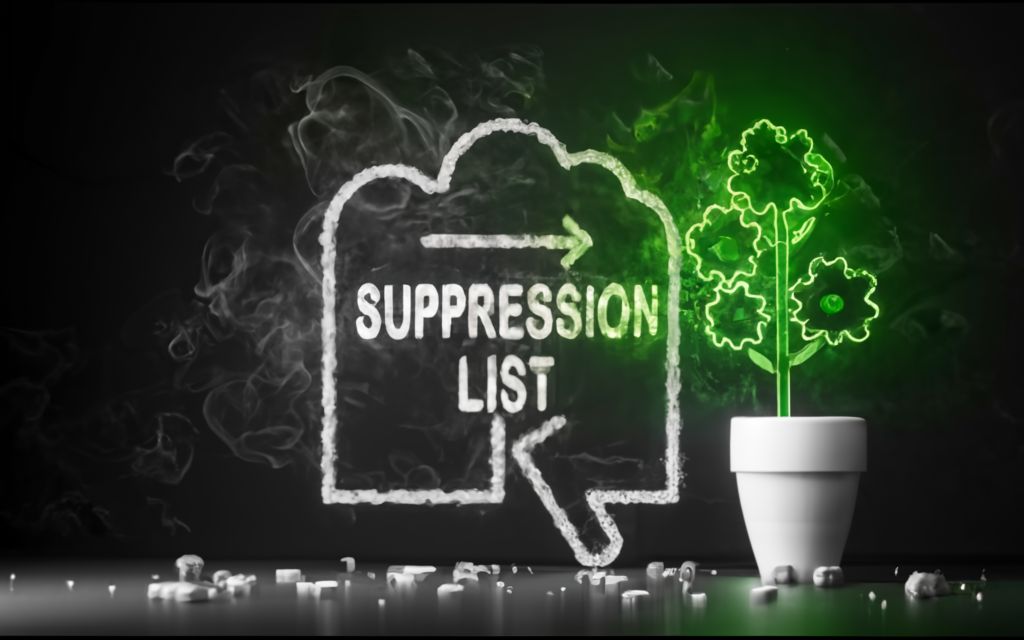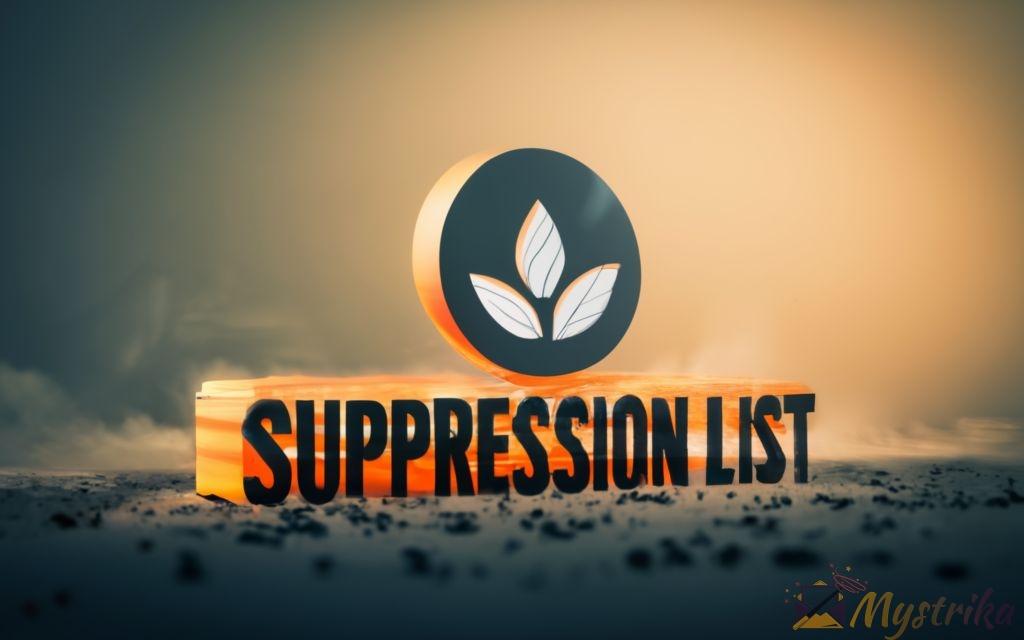Out of sight, out of mind…or is it? Suppression may remove something from view, but the impacts still remain. Master the art of suppression through email list management, eCommerce optimization, and writing mastery with this complete guide. Learn how targeted suppression tactics can profoundly improve deliverability, increase engagement, drive conversions, and hone your communication skills. From properly managing suppression lists to restoring suppressed Amazon listings and writing clearly using suppressed sentences, discover the context-driven strategies that make suppression a masterful tool instead of a confounding hindrance. The answers to “what,” “why,” and “how” await.
Best Practices for Email Suppression List Management
Effective suppression list management is crucial for ensuring your emails reach the inbox. Like changing the oil in your car, it requires regular maintenance and attention to detail. Follow these best practices to keep your list optimized.
Regularly Review and Update Your Suppression List
Your suppression list is a living document that needs continuous care and feeding. Set a reminder to review it on a regular basis, whether weekly, monthly or quarterly depending on your sending volume.
During each review:
- Check for any new hard bounces, spam complaints, or unsubscribes to add to the list. You can download a suppression list report from your ESP.
- Verify existing list entries are still relevant. An address that bounced 6 months ago may now be valid again. Consider removing any addresses that have been suppressed for an extended time.
- Look for any duplicate entries or formatting inconsistencies to clean up. Standardizing addresses helps prevent future duplicates.
- Scan for invalid or risky addresses like role accounts or free email providers. These may need permanent suppression depending on your situation.
- Check deliverability metrics for any concerning trends that may indicate your suppression list needs adjustment.
Regular reviews allow you to maintain an optimized list that adapts alongside your evolving subscriber base and email program.
Use Email Validation Tools to Maintain List Hygiene
Email validation tools analyze address syntax and validity to identify risky or invalid addresses. Running your list through a validator like ZeroBounce or NeverBounce helps uncover:
- Formatting issues like missing domain extensions that cause bounces.
- Typos in addresses that should be corrected or suppressed.
- Spam trap accounts and other high-risk addresses.
- Catch-all inboxes at domains that may lead to low engagement.
This provides valuable insights to prune and perfect your list. You can also use validators to qualitatively score and segment your subscribers. Prioritize sending to engaged users with valid addresses while suppressing inactive and high-risk contacts.
Real-time validation on opt-in forms also helps stop bad addresses before they ever enter your list. Overall, leveraging email verification is a proactive way to control list hygiene.
Set Up Automations to Streamline Process
Manually managing your suppression list across review, updating, and re-validating can become burdensome over time. Alleviate the grind by creating rules and workflows to automate repetitive tasks:
- Build a logic flow that automatically checks new subscriber opt-ins against your suppression list database. Any matches get tagged for suppression.
- Set up a process to update your CRM and ESP suppression lists simultaneously whenever you make a change.
- Configure an automated email notification when your deliverability drops below a threshold, signaling it’s time to re-examine suppressions.
- Use workflow rules to automatically update specific fields or suppress contacts when certain conditions are met.
Work smarter, not harder! Automating parts of suppression list management reduces human error and helps you scale more efficiently.
Document Detailed Suppression List Procedures
A suppression list is only effective if used consistently by everyone on your team. Establish standardized protocols by creating suppression list SOP documentation covering:
- When and how to add different address types like hard bounces or complaints.
- The criteria and timeframe used for keeping vs. removing suppressed addresses.
- How and when to re-validate the list using email verification tools.
- Automations and workflows related to list maintenance.
- Any integrations between your ESP, CRM, and other tools.
- Who is responsible for managing and updating the suppression list.
- Best practices for list hygiene (valid formats, removing risky addresses, etc.)
Thorough documentation ensures your guidelines are followed correctly over time. Make it easy for new team members to get up to speed on your suppression list procedures.
Pro Tip: Maintain your SOP as a central knowledge base article for easy reference and updating.
While a bit tedious, disciplined suppression list management is essential for maximizing email deliverability. Following best practices helps streamline the process so you can focus on creating amazing subscriber experiences.

How Suppression Lists Impact Deliverability and Compliance
Suppression lists provide vital protection for your sender reputation, deliverability rates, and legal compliance. Let’s explore some of the biggest benefits:
Improving Inbox Placement and Open Rates
The ultimate deliverability goal is landing your emails in the primary inbox rather than spam or promotions folders. Suppression lists help achieve this by:
- Removing hard bounces: Repeatedly contacting non-existent addresses is a red flag for spam. Suppressing hard bounces protects your sender score.
- Blocking spam complaints: Recipients reporting your mail as spam directly damages deliverability. Prevent future complaints by suppression.
- Respecting unsubscribes: Honoring opt-out requests improves engagement and shows respect for subscriber preferences.
- Stopping bad addresses: Typos, disposable email accounts, and other invalid addresses negatively impact your email hygiene.
With cleaner email lists and reduced complaints, you become a trusted sender and see higher inbox placement rates. This directly translates to more opens and engagement.
Protecting Sender Reputation and Avoiding Blocklists
Nothing damages deliverability more than getting added to an ISP blocklist like Gmail’s. Common blocklist triggers include:
- Spam traps and honeypots designed to identify unsavvy senders.
- Too many hard bounces signaling a neglected email list.
- Repeated complaints and unsubscribes showing disregard for opt-outs.
- Bad reputation from sharing IP addresses with other blocked senders.
Suppression lists help you dodge thesehazards. Proactively identifying and removing problem addresses keeps your reputation intact. This prevents the catastrophic damage of being unable to reach entire domains and provider networks.
Adhering to Anti-Spam Laws and Regulations
With complex anti-spam laws like the CAN-SPAM Act, GDPR, and CASL, legal compliance must be top of mind. Suppression helps by:
- Automatically documenting opt-out requests for compliance reporting.
- Letting you efficiently honor unsubscribe requests within 10 business days as required.
- Removing subscriber addresses upon request under right-to-erasure data laws.
- Blocking any subscribed addresses that have requested to “forget” your business.
- Keeping records to prove compliance if regulators come knocking.
While suppression alone can’t guarantee full compliance, it provides an important safeguard and documentation buffer.
Key Stat: Emails from new domains without proper suppression had a 20% lower inbox rate on average per ReturnPath.
Prioritizing suppression list management keeps your program healthy and drive results. And staying compliant means one less thing to worry about!

Suppression Lists for eCommerce: Impacts on Amazon Sellers
For Amazon marketplace sellers, having your product listings suppressed can derail your eCommerce business. Let’s explore what causes suppressions, how to fix them, and prevention strategies.
Causes of Suppressed Amazon Listings
Listings are suppressed when removed from Amazon search results, making them invisible to customers. Common suppression triggers include:
Policy Violations
- Inaccurate or misleading detail pages
- Prohibited products
- Missing required info like descriptions
- Images not meeting standards
Poor Customer Experience
- High prices compared to competitors
- Low ratings and negative reviews
- Frequent customer complaints
Irrelevant Results
- Confusing or unrelated listings for search queries
- Duplicate or low-quality listings
Algorithmic Suppression
- Automated suppression of listings with poor conversion history
- Limiting results to display most relevant listings
Suppressions serve both to enforce Amazon’s policies and improve overall customer experience. But they can devastate sellers relying on Amazon traffic.
Consequences for Seller Performance
When listings are suppressed, the impacts on a seller’s metrics and visibility can be severe:
- Loss of organic sales and revenue due to lower visibility.
- Reduced sponsored ad performance from low click-through-rate.
- Higher advertising costs to maintain traffic to suppressed listings.
- Lower conversion rates from dissatisfied customers.
- Damage to brand reputation from negative reviews or complaints.
- Lower ranking on Amazon search when velocity algorithms account for suppressed listings.
- Inability to win the Buy Box due to algorithmic penalties.
- Lower Seller Central account health metrics.
The compounded damage makes addressing suppressions a top priority.
Steps to Restore Suppressed Listings
If suppressed, first identify the exact reason using Seller Central’s “Suppressed and Inactive Listings” report. Then determine the fix:
Listing Content Errors
- Add any missing info like product descriptions.
- Update incorrect details.
- Meet image requirements.
Policy Violations
- Remove any prohibited products.
- Carefully review Amazon’s policies and ensure compliance.
Customer Experience Issues
- Address negative feedback and complaints.
- Lower prices if uncompetitive.
- Improve page content and messaging.
Relevance Problems
- Refine listing title, keywords, and search terms.
- Create more specific listings if too broad.
Appeal Algorithmic Suppressions
- Submit an appeal to Seller Support explaining the perceived error.
- Provide context on listing relevancy and conversion history.
With the right changes, you can get your listing reinstated and have the suspension removed from your account health dashboard.
Preventing Future Suppressions
Amazon states that violations resulting in suppression stay on your account record for 90 days. Multiple offenses increase consequences, so take preventative steps like:
- Closely monitor listings for content issues using feed checkers.
- Stay up-to-date on policy changes and prohibited products.
- Respond quickly to negative reviews and customer issues.
- Check Seller Central frequently for notifications.
- Use repricing tools to stay competitive.
- Optimize listings with relevant keywords and search terms.
An ounce of prevention is worth a pound of cure when it comes to Amazon suppressions. Limiting violations and providing excellent customer experience helps safeguard your account.

Key Takeaways on Email and Content Suppression
Let’s recap the core concepts we’ve covered to master suppression lists and effective content creation:
Summarize Main Points
- A suppression list contains email addresses or other data you want to prevent from receiving messages. This includes bounces, spam complaints, unsubscribes, and other risks.
- Proper suppression list management improves deliverability, protects sender reputation, increases engagement, and ensures legal compliance.
- Regularly review and update your list to keep it optimized. Leverage automation and documentation to streamline maintenance.
- Email verification tools help maintain list hygiene by identifying invalid addresses to suppress.
- For Amazon Sellers, a suppressed listing is removed from search results due to policy violations or other issues. This significantly impacts sales and metrics.
- When writing, omitting predictable words through sentence suppression creates more concise and readable content. But use judiciously.
- Suppressing words in a sentence involves considering context and knowing what can be reasonably inferred by the reader.
- Avoid overusing sentence suppression, as it can create confusion and ambiguity if key details are left unstated.
Parting Tips for Success
With this foundation, you’re equipped to harness suppression for email and content mastery. A few parting tips:
- Document your suppression list SOPs so your process is scalable and repeatable. Update as needed.
- Keep close tabs on your email engagement metrics and listings as part of regular suppression list reviews.
- Familiarize yourself with anti-spam laws like CAN-SPAM so you can remain compliant.
- Use email validators continuously rather than just during list imports for the most accurate data.
- When writing, read your suppressed sentences aloud to ensure clarity and intended meaning come through.
- Err on the side of caution: if a sentence feels confusing without a word, unsuppress it for reader comprehension.
- For Amazon listings, focus on providing stellar customer experiences to minimize negative feedback that triggers suppressions.
The art of suppression simply comes down to understanding context, maintaining open communication, and providing value to your audiences. Master it, and the benefits are ample.

Here are some frequently asked questions about email suppression lists and suppressed content:
What is an email suppression list?
An email suppression list is a list of email addresses that you do not want to send emails to. It typically includes addresses that have bounced, unsubscribed, sent spam complaints, or otherwise demonstrated they do not want to receive emails.
Why are suppression lists important?
Using a suppression list helps ensure you only email engaged recipients who want to hear from you. This protects your sender reputation, improves deliverability, avoids spam filters, and complies with anti-spam regulations.
How do I build my suppression list?
You can manually add addresses that bounce or complain. Many email services also automatically detect bounces and complaints and add those addresses to your account’s suppression list. Importing your list to an email validation tool is another method to uncover risky or invalid addresses to suppress.
When should I remove addresses from my suppression list?
It’s reasonable to remove addresses that have been suppressed for an extended period of time, as the owner may now be willing to receive your emails again. However, use caution when testing suppressed addresses again, as sending to invalid inboxes still damages sender reputation.
How often should I review and update my list?
Industry experts recommend reviewing your suppression list at least monthly. The ideal frequency depends on your list size and sending volume. More frequent reviews let you stay on top of new bounces and complaints.
What is a suppressed Amazon listing?
When an Amazon listing is suppressed, it is removed from search results and becomes invisible to customers browsing the site. Listings are typically suppressed due to policy violations, inaccurate information, irrelevance to search queries, or poor customer experience.
Why are some sentences suppressed in writing?
In sentence suppression, predictable words are intentionally omitted to create more concise, readable content. As long as the overall meaning is retained, removing extraneous words improves flow. But suppression should be used judiciously to avoid confusing readers.
When should I avoid suppressing words in a sentence?
Avoid excessive suppression that makes a sentence ambiguous or distorts its meaning. Also use caution when suppressing words that convey important context, introduce critical new information, or are needed for logic and clarity.

